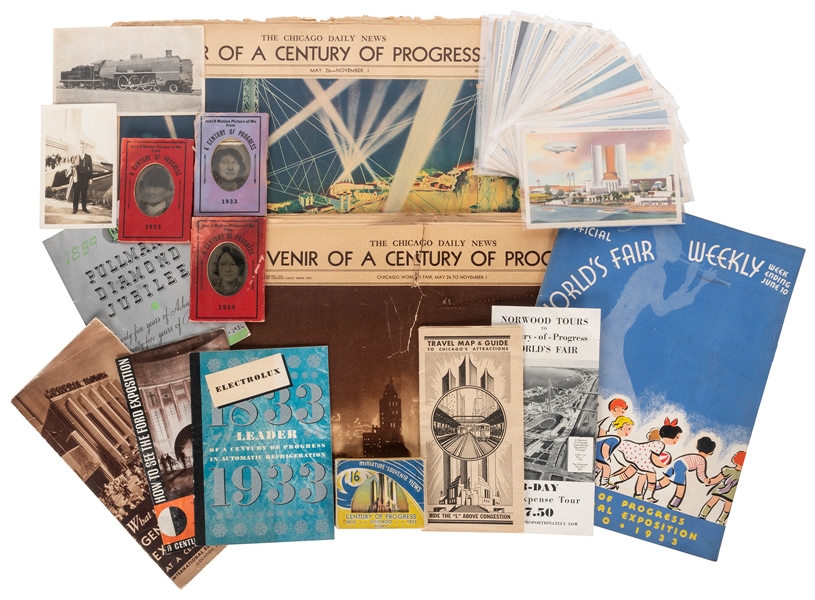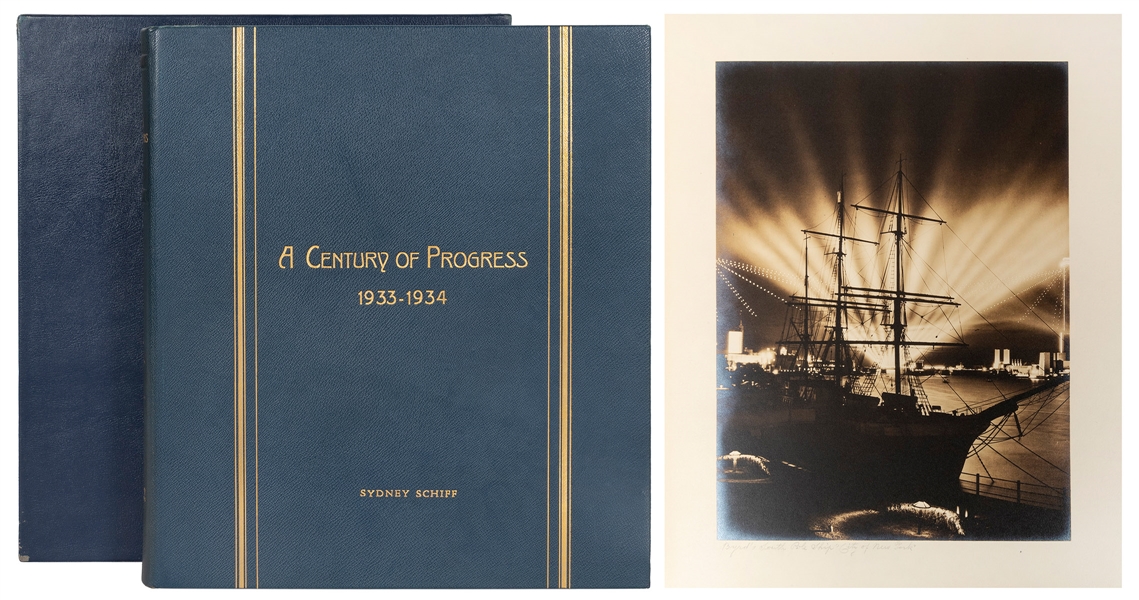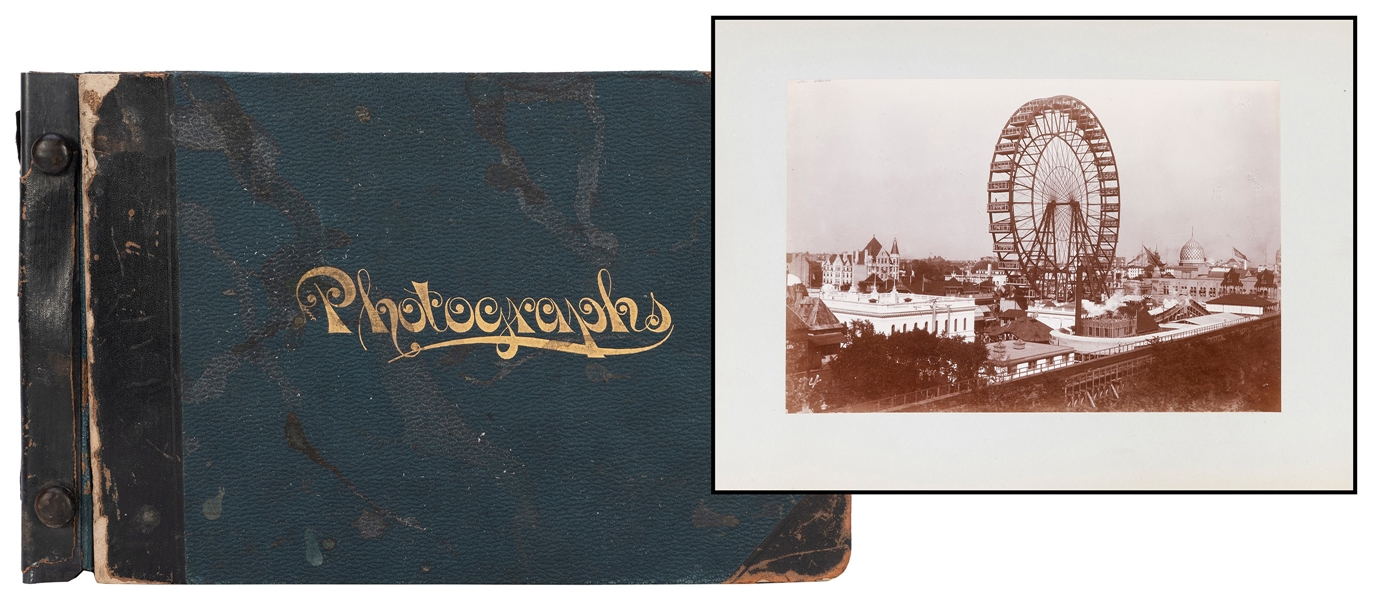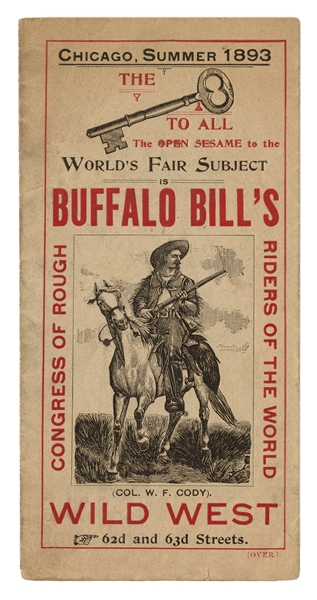Chicago World's Fair of 1893: American Silver-Gilt, Enamel, and Jewel-Mounted Glass Jug, Gorham Mfg. Co., Providence, RI, the Enamels by George de Festetics, 1893
of baluster form, the domed foot with strapwork, Bacchus heads, and enameled wings, the oval body glass overlaid with strapwork and gem-set, enclosing two large enamel plaques of "Venus and the Sleeping Adonis" and "The Birth of Venus" and a small enamel plaque with two mermaids, the neck and spout with strapwork and floral motifs against blue, red and white enameled grounds, the gem-set double scroll handle in the form of a bird with enameled body and wings, marked on base, with sample number 4854, arrow mark, and Gorham date mark for 1893
height 16 3/8 in.41 cmCondition reportSome enamel loss: to foot flanking mask, to lower neck, particularly turquoise blue, to left side of spout, and to green on high spots of handle and surmounting griffon. A little bit of crizzling to Adonis plaque. No crack visible, but does leak when filled with water. Other plaques and silver good. Impressive scale and luxurious feel.ProvenanceSotheby's, New York, January 20, 1998, lot 2191Catalogue noteAccording to Samuel J. Hough, this jug was one of the centerpieces of Gorham's display at the 1893 Columbian Exposition in Chicago. Made specifically for the Fair, it was finished June 1, 1893. The piece required 125 hours of fabrication and 300 hours of chasing. The piece was then sent to New York for setting the stones and enameling. The enamel, both the decorative grounds and the Venus panels, was executed by the Hungarian artist, G. DeFestetics, who spent over 378 hours at a cost of $350.00. Many of Gorham's offerings in 1893 were designed by William C. Codman, such as the Nautilus centerpiece. Although Codman's name cannot be tied directly to this jug, its feel is similar to the designer's work at this period.
This piece, with an engraved depiction, was highlighted in the Providence Sunday Journal, June 18, 1893, which was publishing highlights headed for the fair:...one of the daintiest articles which has been recently completed and shipped to Chicago. This is an enamelled rose water jar which stands 16 inches high. The body of the jar is of clear white glass, with silver ornamentation about it, pierced so that the glass surface may show through. The paintings on the body of the vase, one on each side and one on the front, represent three allegorical subjects, executed by De Festetics, and surrounded by very fine ornamentation in oxidized silver and parcel-gilt. The coloring in the enamelled surfaces is harmoniously blended and very beautiful, lending much to the general artistic effect of the fine metal working. The neck of the jar or vase is handsomely enamelled and studded with jewels, amethysts, carbuncles and crystals. A griffin, with wings of translucent enamel and delicate ornamental work, forms the handle. Originality and beauty of design are combined with completeness and delicacy of execution to make this vase a gem of artistic work... the value of the rose water jar is $1,000.
Gorham's enamel work was a success at the 1893 Exposition, and the company received seven awards for this technique alone. A pamphlet published by the firm in 1894 about its display records that "it is scarcely a year since the Gorham Company commenced the production of translucent enamels, yet this work is of such a high order that one of the German Commissioners at the Fair has purchased a specimen of it...to be placed in the Royal Kunstgewerbe Museum of Berlin." Gorham's records reveal that the Company was prepared to take only $44.00 profit on this piece which had cost $800.00 to manufacture; for exhibition purposes, immediate financial gain was secondary to art and recognition.
Chicago World's Fair of 1893: American Silver-Gilt, Enamel, and Jewel-Mounted Glass Jug, Gorham Mfg. Co., Providence, RI, the Enamels by George de Festetics, 1893
of baluster form, the domed foot with strapwork, Bacchus heads, and enameled wings, the oval body glass overlaid with strapwork and gem-set, enclosing two large enamel plaques of "Venus and the Sleeping Adonis" and "The Birth of Venus" and a small enamel plaque with two mermaids, the neck and spout with strapwork and floral motifs against blue, red and white enameled grounds, the gem-set double scroll handle in the form of a bird with enameled body and wings, marked on base, with sample number 4854, arrow mark, and Gorham date mark for 1893
height 16 3/8 in.41 cmCondition reportSome enamel loss: to foot flanking mask, to lower neck, particularly turquoise blue, to left side of spout, and to green on high spots of handle and surmounting griffon. A little bit of crizzling to Adonis plaque. No crack visible, but does leak when filled with water. Other plaques and silver good. Impressive scale and luxurious feel.ProvenanceSotheby's, New York, January 20, 1998, lot 2191Catalogue noteAccording to Samuel J. Hough, this jug was one of the centerpieces of Gorham's display at the 1893 Columbian Exposition in Chicago. Made specifically for the Fair, it was finished June 1, 1893. The piece required 125 hours of fabrication and 300 hours of chasing. The piece was then sent to New York for setting the stones and enameling. The enamel, both the decorative grounds and the Venus panels, was executed by the Hungarian artist, G. DeFestetics, who spent over 378 hours at a cost of $350.00. Many of Gorham's offerings in 1893 were designed by William C. Codman, such as the Nautilus centerpiece. Although Codman's name cannot be tied directly to this jug, its feel is similar to the designer's work at this period.
This piece, with an engraved depiction, was highlighted in the Providence Sunday Journal, June 18, 1893, which was publishing highlights headed for the fair:...one of the daintiest articles which has been recently completed and shipped to Chicago. This is an enamelled rose water jar which stands 16 inches high. The body of the jar is of clear white glass, with silver ornamentation about it, pierced so that the glass surface may show through. The paintings on the body of the vase, one on each side and one on the front, represent three allegorical subjects, executed by De Festetics, and surrounded by very fine ornamentation in oxidized silver and parcel-gilt. The coloring in the enamelled surfaces is harmoniously blended and very beautiful, lending much to the general artistic effect of the fine metal working. The neck of the jar or vase is handsomely enamelled and studded with jewels, amethysts, carbuncles and crystals. A griffin, with wings of translucent enamel and delicate ornamental work, forms the handle. Originality and beauty of design are combined with completeness and delicacy of execution to make this vase a gem of artistic work... the value of the rose water jar is $1,000.
Gorham's enamel work was a success at the 1893 Exposition, and the company received seven awards for this technique alone. A pamphlet published by the firm in 1894 about its display records that "it is scarcely a year since the Gorham Company commenced the production of translucent enamels, yet this work is of such a high order that one of the German Commissioners at the Fair has purchased a specimen of it...to be placed in the Royal Kunstgewerbe Museum of Berlin." Gorham's records reveal that the Company was prepared to take only $44.00 profit on this piece which had cost $800.00 to manufacture; for exhibition purposes, immediate financial gain was secondary to art and recognition.















Testen Sie LotSearch und seine Premium-Features 7 Tage - ohne Kosten!
Lassen Sie sich automatisch über neue Objekte in kommenden Auktionen benachrichtigen.
Suchauftrag anlegen